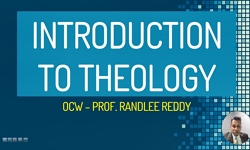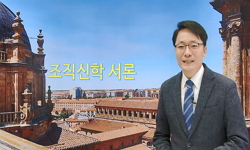This paper examines Wang Anshi's idea of Dao in the broader context of the 11th century intellectual ambience in which the pursuit of one universal principle applicable to everything pervaded. I attempt to explain Wang's philological studies in relati...
http://chineseinput.net/에서 pinyin(병음)방식으로 중국어를 변환할 수 있습니다.
변환된 중국어를 복사하여 사용하시면 됩니다.
- 中文 을 입력하시려면 zhongwen을 입력하시고 space를누르시면됩니다.
- 北京 을 입력하시려면 beijing을 입력하시고 space를 누르시면 됩니다.
https://www.riss.kr/link?id=A82257930
- 저자
- 발행기관
- 학술지명
- 권호사항
-
발행연도
2010
-
작성언어
Korean
-
주제어
왕안석 ; 문자학 ; 도 ; 자설 ; 신학 ; 王安石 ; 文字學 ; 道 ; 字說 ; 新學 ; Wang Anshi ; Philological studies ; Dao ; Explanation of Characters ; New Learning
-
등재정보
KCI등재
-
자료형태
학술저널
- 발행기관 URL
-
수록면
139-186(48쪽)
-
KCI 피인용횟수
4
- 제공처
- 소장기관
-
0
상세조회 -
0
다운로드
부가정보
다국어 초록 (Multilingual Abstract)
This paper examines Wang Anshi's idea of Dao in the broader context of the 11th century intellectual ambience in which the pursuit of one universal principle applicable to everything pervaded. I attempt to explain Wang's philological studies in relation to his pursuit of the universal principle. Wang's learning aimed to deal with the question, “how to learn” or “how to know sage's original intention.” Wang's answer to the question was embodied in his classical studies, which he proposed as the foundation of the unity of morality and customs. Wang focused on the way to learn the coherence of the classics and right reasoning process. He believed that we can find the way to unify the method of reasoning. His idiosyncratic philological studies provided the base for the method. Wang's thought and learning reveals the transitional nature in the pursuit of universal principle starting with the mid Tang period and culminating in the Daoxue movement in the Southern Song period. Wang's learning shares many similar assumptions and problematics with Daoxue, especially at its “meta” level of knowledge structure. However unlike Daoxue Wang's learning failed to systemize and theorize the universal principle. In addition, fundamentally they cannot be compatible both in intellectual and political terms. The close study of Wang's learning also contribute to the exploration of new ways to understand intellectual history of East Asia, based on the continuity and transformations of certain important cultural and intellectual elements such as Chinese characters, philological studies, and classical studies, recurrent in the later periods.
목차 (Table of Contents)
- 序論
- Ⅰ. 王安石의 學과 文字學의 윤곽
- Ⅱ. 하나의 원리, 經術, 그리고 字
- Ⅲ. 王安石의 字 해석과 諸問題들
- 結語
- 序論
- Ⅰ. 王安石의 學과 文字學의 윤곽
- Ⅱ. 하나의 원리, 經術, 그리고 字
- Ⅲ. 王安石의 字 해석과 諸問題들
- 結語
참고문헌 (Reference)
1 肖海燕, "論王安石學派的莊學硏究" 華中師範大學 2006
2 林志强, "論字說現象"
3 데이비드 E 먼젤로, "진기한 나라, 중국 -예수회 적응주의와 중국학의 기원" 나남 2009
4 미우라 쿠니오, "왕안석, 황하를 거스른 개혁가" 책세상 45-69, 2005
5 심소희, "신유가의 언어관 탐색" 9 : 2001
6 고지마 쓰요시, "송학의 형성과 전개" 논형 23-32, 2004
7 이원석, "송대 사대부의 춘추관에 대한 연구 -왕안석의 춘추 비판 배경분석을 중심으로" 30 : 2007
8 쓰치다 겐지로, "북송도학사" 예문서원 2006
9 이돈주, "邵雍의 ?皇極經世聲音唱和圖?와 宋代漢字音" 국어학회 43 (43): 3-35, 2004
10 徐規, "走出 '荊公新學'" 35 (35): 2005
1 肖海燕, "論王安石學派的莊學硏究" 華中師範大學 2006
2 林志强, "論字說現象"
3 데이비드 E 먼젤로, "진기한 나라, 중국 -예수회 적응주의와 중국학의 기원" 나남 2009
4 미우라 쿠니오, "왕안석, 황하를 거스른 개혁가" 책세상 45-69, 2005
5 심소희, "신유가의 언어관 탐색" 9 : 2001
6 고지마 쓰요시, "송학의 형성과 전개" 논형 23-32, 2004
7 이원석, "송대 사대부의 춘추관에 대한 연구 -왕안석의 춘추 비판 배경분석을 중심으로" 30 : 2007
8 쓰치다 겐지로, "북송도학사" 예문서원 2006
9 이돈주, "邵雍의 ?皇極經世聲音唱和圖?와 宋代漢字音" 국어학회 43 (43): 3-35, 2004
10 徐規, "走出 '荊公新學'" 35 (35): 2005
11 염정삼, "說文解字注 부수자 역해" 서울대학교출판부 2009
12 邱漢生, "詩義鉤沉" 中華書局 1982
13 張洁, "詩經新義硏究" 山西大學 2007
14 楊倩描, "荊公易解鉤沉. in 王安石 易 學研究" 河北大學出版社 26-104, 2006
15 劉成國, "荊公新學研究" 上海古籍出版社 2006
16 王書華, "荊公新學的創立與發展" 2001
17 王安石, "答曾子固書" 73 : 10-,
18 朱熹, "答張敬夫. in 朱熹集" 四川敎育出版社 1318-, 1996
19 "程氏遺書, 卷 2 上"
20 近藤正則, "程伊川の「孟子」の受容と衍義" 汲古書院 5-94, 1996
21 容肇祖, "王安石老子注輯本" 中華書局 1979
22 李華瑞, "王安石變法硏究史" 人民出版社 2004
23 傳著, "王安石易學與其新學及洛學" 34 (34): 1997
24 東一夫, "王安石新法の硏究" 風間書房 1970
25 楊天保, "王安石學術稱謂的流變史"
26 李祥俊, "王安石學術思想硏究" 北京師範大學出版社 2000
27 楊天保, "王安石學術史硏究 -以“金陵王學”(1021-1067)爲重點" 浙江大學 2004
28 張宗祥輯錄, "王安石<<字說>>輯" 福建人民出版社 2005
29 이범학, "王安石 改革論의 形成과 性格. - 新法의 思想的 背景에 對한 一試論" 48-54, 1983
30 楊倩描, "王安石 易 學硏究" 河北大學 2006
31 楊倩描, "王安石 易 學研究" 河北大學出版社 2006
32 方笑一, "王安石 尙書新義 初探" 39 (39): 123-, 2007
33 염정삼, "漢字 形象의 의미론적 연관 구조에 관하여- 部首字를 중심으로" 한국중어중문학회 35 : 1-37, 2004
34 朱熹, "朱子語類. in 朱子全書" 上海古籍出版社 3541-, 2002
35 李幼武, "宋名臣言行錄外集"
36 王鐵, "宋代易學" 上海古籍出版社 2005
37 葉國良, "宋人疑經改經考" 臺灣大學出版 1980
38 배상규, "北宋代 文字學의 思想史的 意味 -王安石 字說 을 중심으로" 32 : 218-221, 2008
39 程元敏, "三經新義輯考彙評" 國立編譯館 1986
40 장기윤, "《说文解字繫傳》述评" 중국어문학연구회 53 (53): 45-56, 2008
41 Peter K. Bol, "hu Hsi’s Redefinition of Literati Learning. in Neo-Confucian Education: The Formative Stage" University of California Press 1989
42 Peter K. Bol, "This Culture of Ours, Intellectual Transitions in T'ang and Sung China" Stanford University Press 1992
43 Umberto Eco, "The Search for the Perfect Language" Wiley 1997
44 Ira E. Kasoff, "The Intellectual Climate of the Eleventh Century in The Thought of Chang Tsai" Cambridge University Press 7-33, 1984
45 Natan Sivin, "Shen Kua, Science in Ancient China: Researches and Reflections" Ashgate Publishing 1995
46 James T., "Reform in Sung China: Wang An-shi(1021-1086)and New Policies" Harvard University Press 1959
47 Beverly Bossler, "Powerful Relations: Kinship Status and the State in Song China (960-1279)" Council on East Asian Studies 1998
48 Maat Jaap, "Philosophical Languages in the Seventeenth Century: Dalgarno, Wilkins, Leibniz" Springer 2004
49 Peter K. Bol, "Neo-Confucianism in History" Cambridge, Harvard Asia Center 2009
50 Kidder Smith, Jr, "Introduction, Sung Dynasty Uses of the I Ching" Princeton University Press 1990
동일학술지(권/호) 다른 논문
-
- 동양사학회
- 林炳德(Lim Beong-Duk)
- 2010
- KCI등재
-
- 동양사학회
- 金羨珉(Kim Sun-Min)
- 2010
- KCI등재
-
- 동양사학회
- 鄭勉(Jeong Myeon)
- 2010
- KCI등재
-
- 동양사학회
- 崔允精(Choi Yoon-Jung)
- 2010
- KCI등재
분석정보
인용정보 인용지수 설명보기
학술지 이력
| 연월일 | 이력구분 | 이력상세 | 등재구분 |
|---|---|---|---|
| 2023 | 평가예정 | 계속평가 신청대상 (등재유지) | |
| 2018-01-01 | 평가 | 우수등재학술지 선정 (계속평가) | |
| 2015-01-01 | 평가 | 등재학술지 유지 (등재유지) |  |
| 2011-01-01 | 평가 | 등재학술지 유지 (등재유지) |  |
| 2009-01-01 | 평가 | 등재학술지 유지 (등재유지) |  |
| 2007-01-01 | 평가 | 등재학술지 유지 (등재유지) |  |
| 2005-01-01 | 평가 | 등재학술지 유지 (등재유지) |  |
| 2002-01-01 | 평가 | 등재학술지 선정 (등재후보2차) |  |
| 1999-07-01 | 평가 | 등재후보학술지 선정 (신규평가) |  |
학술지 인용정보
| 기준연도 | WOS-KCI 통합IF(2년) | KCIF(2년) | KCIF(3년) |
|---|---|---|---|
| 2016 | 1.63 | 1.63 | 1.34 |
| KCIF(4년) | KCIF(5년) | 중심성지수(3년) | 즉시성지수 |
| 1.22 | 1.08 | 1.624 | 0.46 |
연관 공개강의(KOCW)
-

신학개론
우송대학교 Randlee Reddy -

조직신학
삼육대학교 제해종 -

실천신학입문
서울신학대학교 김형락 -

신학입문
장로회신학대학교 박경수, 고원석, 신형섭, 이상억, 오방식, 최진봉, 배정훈, 이은우, 김철홍, 서원모, 이창호, 고재길, 김은혜, 신옥수, 백충현, 김도훈, 안교성, 장신근, 이병옥, 변창욱, 박보경, 조성환, 이상일, 김문경, 하경택 -

신학입문
장로회신학대학교 배정훈, 오방식, 이상억, 최진봉, 신형섭, 고원석, 장신근, 이병옥, 남성현, 박보경, 이한나, 김신웅, 이상일, 이창호, 고재길, 김은혜, 신옥수, 송용원, 김도훈, 박경수, 최영근, 서원모, 김태섭, 김철홍, 김문경, 이은우, 하경택




 KCI
KCI DBpia
DBpia


